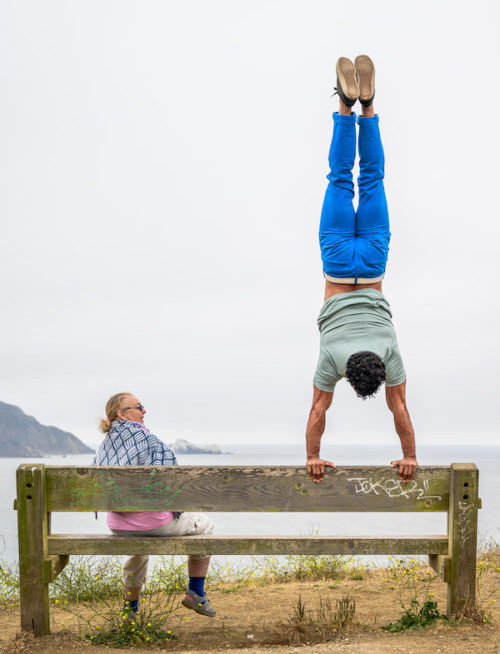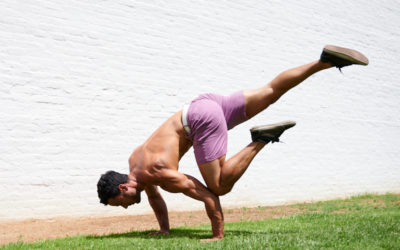There are many factors that warrant consideration when building a program, either initially, or several years into an individual’s training. What I want to do here is share some of these factors in basic terms for my clients, and for others who may be following individualized programs. Hopefully a greater understanding of progression will generate excitement when you walk into the gym each day.
Initial Considerations:
At the outset of any program or training cycle information must be gathered and interpreted in relation to the athlete’s goals and desires. If an athlete has no sporting or training experience, but after one year of CrossFit decides he/she wants to go to the CrossFit Games the following year, that is an unrealistic goal. Asking questions to determine an athlete’s starting point will help the coach give an accurate assessment of the client’s goals and a likely timeline for reaching them.
- Previous Experience – An athlete with zero experience is going to need to learn to train before they can do anything too challenging. Muscles, bones and tendons all must be brought up to speed before attempting anything too challenging.
- Training Age vs Biological Age – 17 year old who has been training Olympic weightlifting from the age of 14 and is competing on the world stage is going to have a high training age despite only being 17. Biological age is about how old a person is, whereas training age is about how much training that person has done regardless of their age.
- Recent Training Experience – If a client was a world class athlete or Navy SEAL 20 years ago their capacity will be much different from someone who is a current athlete or SEAL. It is important to recognize that an athletes mind will remember their best and it is the coaches job to input constraints that moderate workouts in a way to produces progress without causing injury through overreaching.
- Injuries – Injuries must always be respected and every training program should prioritize strengthening any factors that will prevent re-injury and other injuries that may be likely due to the athlete’s sport, or profession.
Neurological Factors:
The brain comes first in training. Neurological factors control skill acquisition and consistency of execution at higher intensity (heavier weights and faster speeds) as well as under metabolic fatigue (when you’re tired).
- Movement Patterning – The basic movements intended for training must be learned, practiced and repeated until the desired proficiency is achieved.
- Initial learning will be Explicit, or coached and explained. Eventually an athlete will develop more awareness of their body and learning will become Implicit, or take place subconsciously as they move and observe their own exercise.
- Initial learning will be Explicit, or coached and explained. Eventually an athlete will develop more awareness of their body and learning will become Implicit, or take place subconsciously as they move and observe their own exercise.
- Training Setting – Training should progress, determined by movement towards a goal, from simple to complex.
- Full Rest – This allows an athlete to devote 100% of their focus and attention to learning the skill at hand
- Intensity (load) – Execute the acquired skill with gradually higher weights
- Intensity (speed) – Skills should be learned slowly and then faster as capability increases
- Volume – Gradually compress training volume (the amount of repetitions) into smaller and smaller time frames
- Training OTM is a common method
- Metabolic Fatigue – Adding a run or other aerobic exercise immediately before the skill to challenge coordination when the body is aerobically stressed
- Complexity – Create aerobic fatigue with multiple skills that have all been learned through this same process
- Repeat – Return to full rest and build greater higher quality movement patterns to develop a larger base that will permit greater loads, higher speeds, better adaptation to complexity in the future.
- Strength and Speed Continuum – Another way of looking at the speed of training in relation to exercises involving strength. Progression should initially move from strength to speed.
- Absolute Strength – Ex. Deadlift
- Strength Speed – Ex. Power Clean
- Speed Strength – Ex. Medicine Ball Throw
- Absolute Speed – Ex. Vertical Jump
- Sleep and Recovery – Memory consolidation occurs during sleep. Having restful and uninterrupted sleep of 8+ hours will greatly assist in increasing the speed of skill development.
- Check out an article from the University of California San Francisco on the effects of sleep and learning new motor skills HERE
Physiological Factors:
- Cardiovascular – Developing cardio is more than breathing hard.
- Capillarization – Capillaries in tissues allow oxygen to move from the blood and into muscles where it can be utilized as fuel. Built with lower intensity aerobic work and large volumes of time/repetitions spent with the desired modality and muscle groups. Time frame is months and years.
- VO2 Max – The amount of oxygen that can be pulled into the body by the lungs. Built with progressively higher intensity aerobic work to a genetic ceiling unique to the individual. Time frame is weeks and months.
- Lactate Threshold – The amount of lactic acid your body can process locally and generally (the heart is extremely efficient at processing global lactate from the bloodstream) before hydrogen ions build up to a level that interferes with muscle contraction. Built through high intensity efforts with extended rests. Time frame is days and weeks.
- Together and in this order maximum capacity is built. It is obvious from the time frames specified why high intensity has become popular in recent years. Fast results. However, the mechanisms for processing lactic acid come from aerobic training. Therefore high intensity training without continued aerobic work will only maximize your potential today and will not generate progress to what you can be, or your genetic potential. There are no shortcuts to aerobic fitness.
Strength:
- Muscle Size and Strength – Muscles can grow larger and develop greater strength. It has been shown that muscles can rebuild their tissues in 1-3 months and thus you can build greater size and strength in this time frame.
- Muscle size is generated with rep ranges around 10-20 of maximal effort and 40-70 seconds in length. Small rest is sufficient between sets.
- Muscle strength is generated with rep ranges of 1-3 and lasting less than 10 seconds and some say up to 20 seconds. Large rest of up to 6-8 minutes for trained athletes can be required between these sets
- A combination of, and conditioning strength, can be generated in the middle ground between these ranges and by manipulating the rest periods between sets.
- Tendon and Ligament Strength – Tendons and ligaments lack the blood flow seen in muscles. Due to this they require 6-12 months of conditioning to increase both their size and strength.
- Tendon Size – Built with extremely high volumes. Multiple sets of 100 calf raises is a common way to strengthen the achilles. If you’ve had patellar tendinitis and you train with me you’ve seen this method used with sets of 20 on Poliquin and Peterson step-ups to build the connective tissue strength around the knee.
- The high volume is required to get enough blood flow around the tendon to produce positive effects
- Tendon Strength – Built with high impact and plyometric rebounding. In extremely high speed rebounding muscle tissues lock down and tendons rapidly stretch and contract to absorb and redirect force. With sufficiently developed and conditioned tendons this will build incredible strength capable of handling the tumbling forces seen in gymnastics and strength required in static exercises like the iron cross.
- Tendon strength like this is built over years and is unforgiving. Rushing progressions requiring tendon strength will cause catastrophic failure (ruptured tendons).
- Doing 300 wrist rocks or calf raises each day may seem boring, but perhaps after reading and understanding a small portion of the reasoning behind why it’s essential will encourage you to enjoy these repetitions a bit more.
Core Strength:
Your core connects your body to your legs. With a weak core this connection is much like the hinge of a door. It will do its job, but there is no power to control the hinge. It is important enough in my opinion to warrant a section in itself.
- Coordination – Most people are shocked to learn they have no idea how to flex their abs and lack the body awareness to create any meaningful tension in their “core.†Exercises like the dead bug are useful to practice engagement of these muscles, but also require that you have control of them to even do the exercise correctly. For this reason I like simple exercises like flexing your abs until you feel like you’re going to pass out while sitting. While standing. And while walking. This almost sounds like a joke, but it is very basic and a requisite starting point for many before they have any ability to keep these muscles squeezed while squatting, doing kipping pull ups, or Olympic weightlifting. This should be practiced every single day of your life.
- Strength – Once you have generated awareness of your core muscles exercises like squats and deadlifts, often cited in publications seeking to diminish the importance of abdominal specific exercises, will begin to generate tremendous core strength.
- Gymnastic and calisthenics exercises like levers and planches are tremendous for building core strength as well as expressing the hard work you’ve put in a cool way to show off for your friends.
- Variation – The core is designed to support your body in a three dimensional world. Thus core training should take place in the full sphere of the world that we live in. I look to strength and conditioning, gymnastics, calisthenics, pilates, and dance for various exercises that challenge the core for accessory exercises.
These factors constitute a general look into some of the factors I consider when building a program for an athlete of any skill level. In a perfect world I could take every athlete from adolescence through each of these stages in a controlled manner to develop elite performance similar to the Soviet Union in the late 1960’s and 70’s. Working with regular people creates the fun and unique challenge of working with athletes who have developed skills and experience at varying positions in all points of these continuums.
As I program and get to know athletes better I can use this information to determine which areas are deficient and inhibiting progress. By identifying these areas and eliminating them gradually we can create a solid base upon which we can continue to develop physical progress.
If you find this article insightful or have any questions please take the time to leave a comment below. I fully intend to update this article to more clearly explain the concepts within, add additional components I may have left out and to create other articles expanding on some of the ideas that may warrant greater detail.






